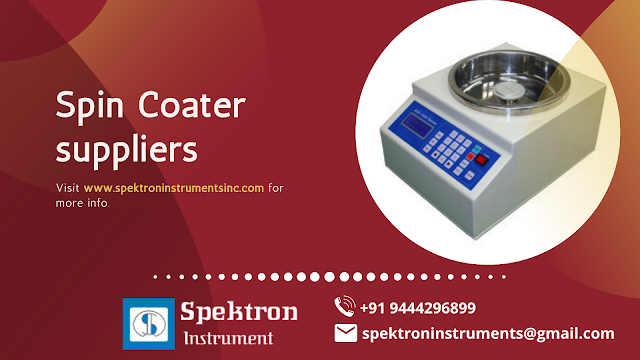Spin Coating Process, Application, Advantages and Disadvantages
Spin coating is a Distinctive method for applying thin films to substrates. At the point when an answer of a material and a dissolvable is turned at high rates, the centripetal power and the surface pressure of the fluid together make an in any event, covering. After any leftover dissolvable has evaporated, spin coating brings about a thin film going from a couple of nanometres to a couple of microns in thickness.
Spin-coating procedure
Spin-coating procedure is utilized to get ready uniform thin films in the thickness scope of micrometer to nanometer. The substrate is mounted on a hurl that turns the example, and the divergent power drives the fluid fundamentally outward. Gooey power and surface strain are the primary driver for the level statement on surface. At last, the thin film is shaped by the evaporation. Spin coating consists of a few phases, for example, liquid dispense, spin up, stable liquid surge, spin off, and evaporation, individually.
Applications
Spin coating is incredibly generally utilized and has a changed scope of utilizations. The strategy can be utilized to coat anything from little substrates estimating a couple of millimeters squared, up to level board displays which may be a meter or more in measurement. It is utilized for coating substrates with everything from photoresists, insulators, natural semiconductors, manufactured metals, nanomaterials, metal and metal oxide antecedents, transparent conductive oxides and a lot more materials. To put it plainly, spin coating is omnipresent all through the semiconductor and nanotechnology R&D and mechanical areas.
Benefits to the strategy of spin
coating
· There is less loss of materials than with fume stage statement;
· It is a moderately inexpensive– a spinning plate is far less expensive than a vacuum affidavit framework;
· The spin-coating implies we can rapidly and effectively store thin layers.
Disadvantages to the procedure of spin coating
· Trouble of making multi-facet structures (> 2 layers);
· Probability of the presence of contaminants (traces of dissolvable, oxygen, mugginess, and so forth);
· Trouble of precisely controlling the affidavit (homogeneity, rugosity, and so on);
· Difficulty of making amazingly thin films
For More Information: Spin Coater suppliers



Comments
Post a Comment